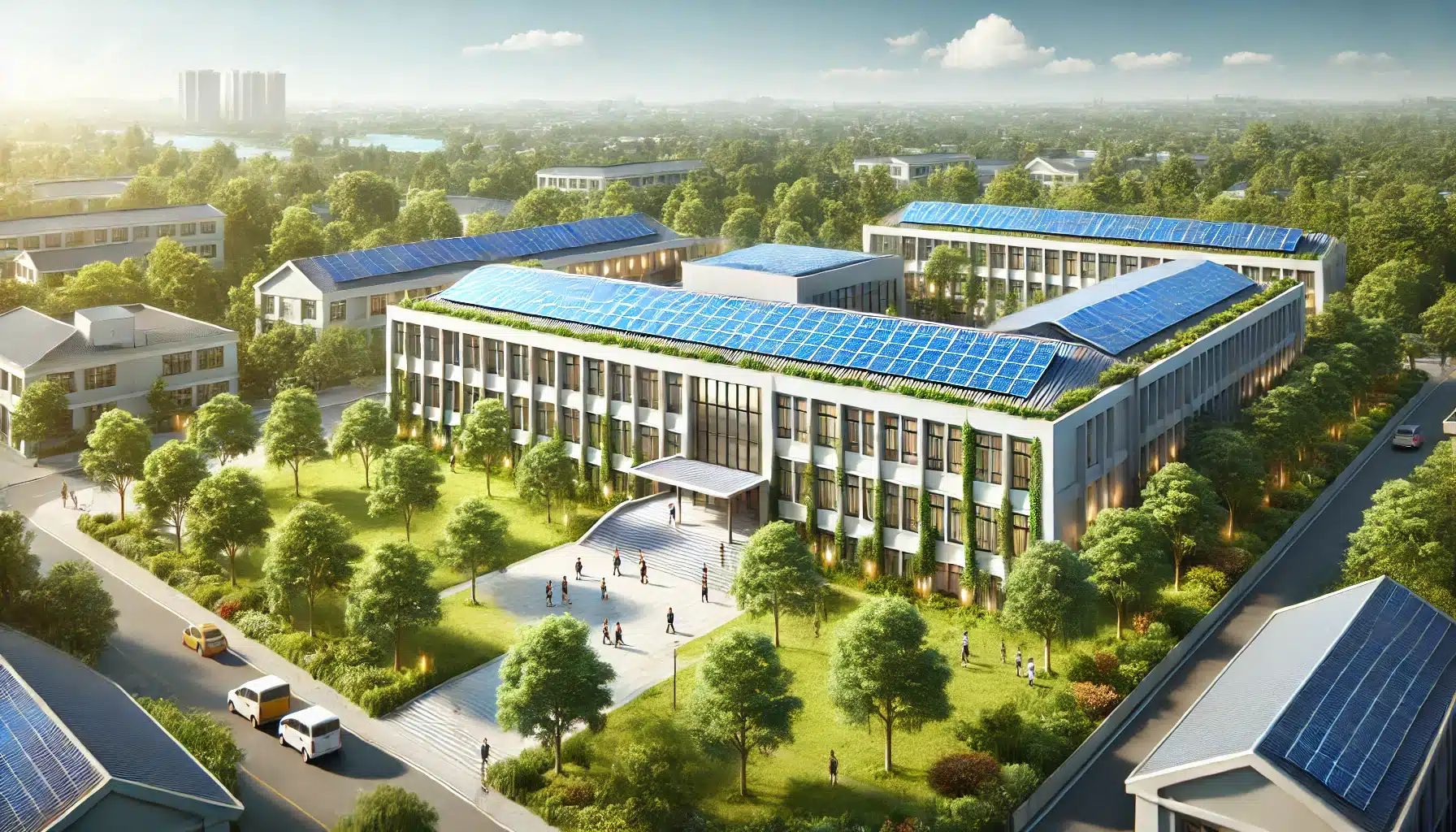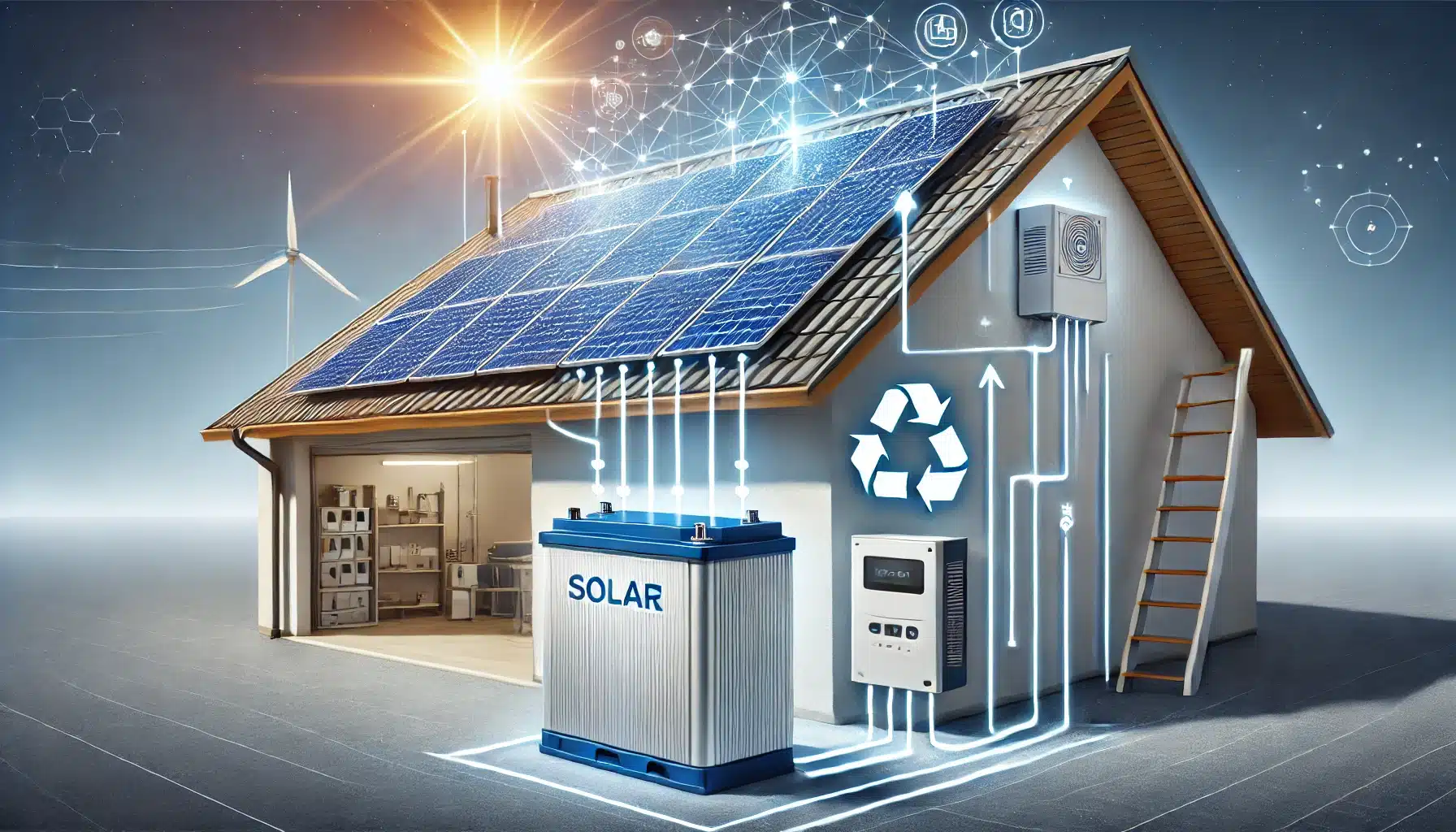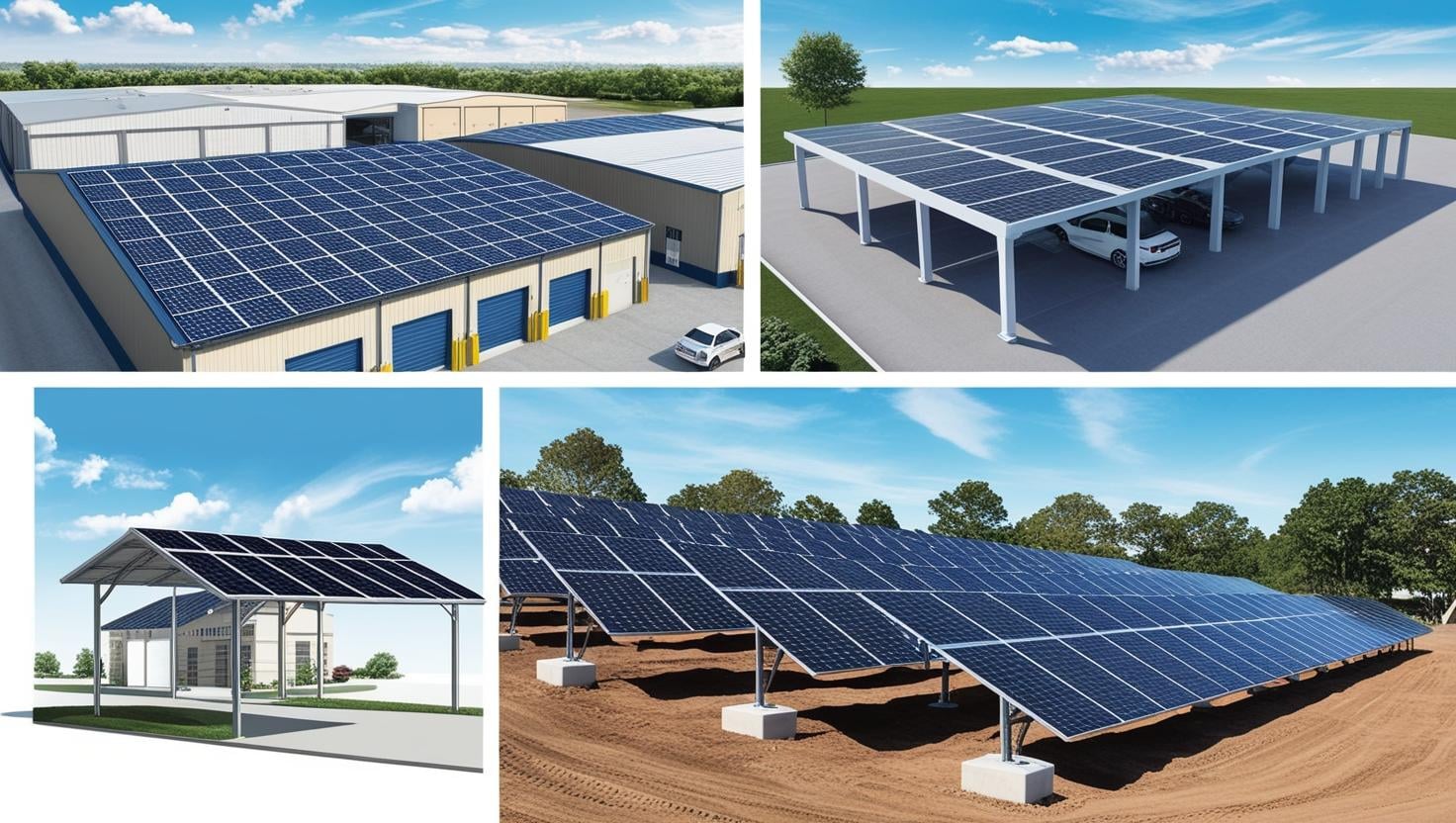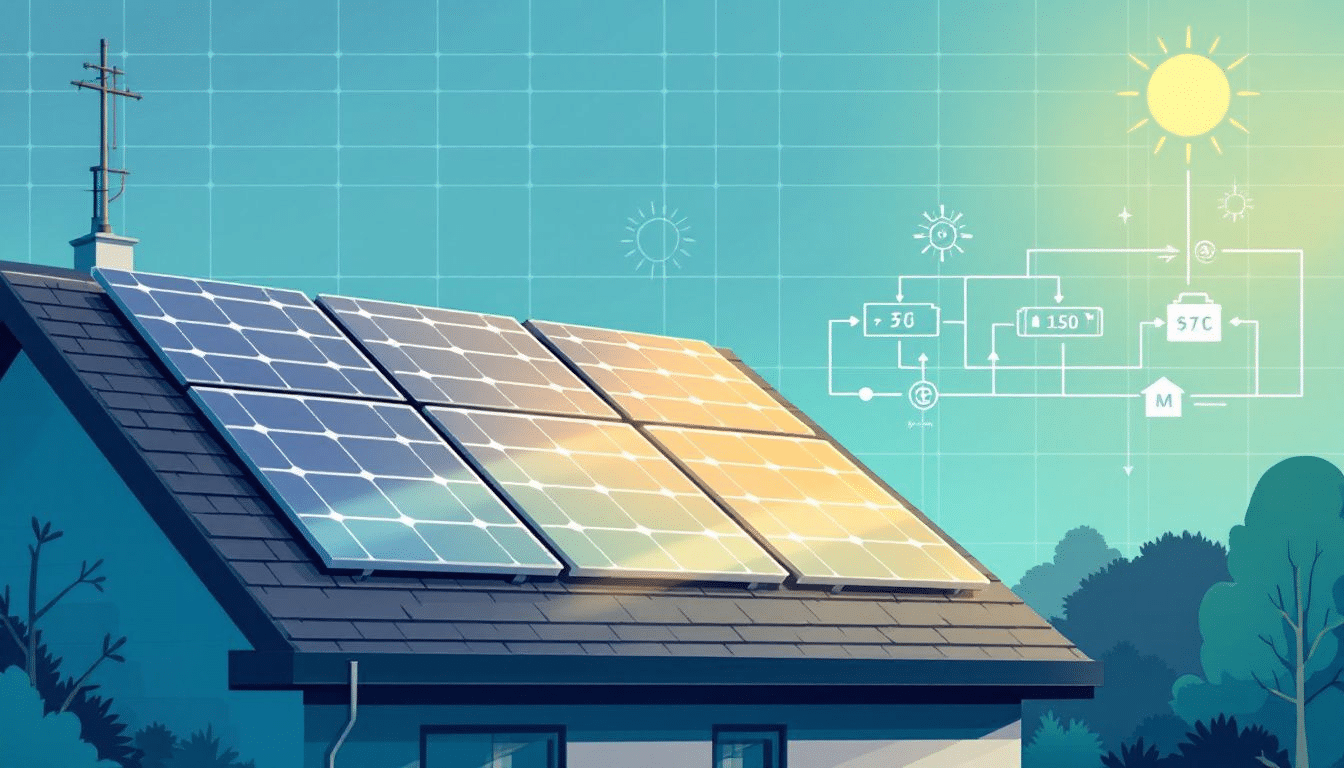Key Takeaways
- Solar power offers schools substantial cost savings, environmental benefits, and unique educational opportunities.
- With careful planning and suitable financing options, schools can integrate solar energy systems to reduce long-term energy costs and emissions.
- Solar energy can be a hands-on educational tool that enhances STEM learning and teaches students about sustainability.
In today’s world, where sustainability and cost-efficiency are essential, schools stand to benefit tremendously from the adoption of solar energy.
Solar panels offer schools a unique opportunity not only to cut down on operating expenses but also to take part in a global movement toward environmental responsibility.
This comprehensive guide provides school administrators, faculty, and parents with a clear roadmap for adopting solar energy, focusing on both the economic and educational benefits that solar panels can provide.
Benefits of Solar Power for Schools

Solar power brings a host of advantages beyond being an environmentally friendly energy source. For schools, it is a strategic investment that can impact students, educators, and the community at large.
Financial and Environmental Advantages
By switching to solar energy, schools can see significant reductions in their energy bills, helping redirect funds toward enhancing student programs and resources. It’s estimated that U.S. K-12 schools could save billions annually on energy costs by transitioning to solar power.
Promoting a Sustainable Future
Embracing renewable energy helps schools lower their carbon footprint, setting an example for students about the importance of environmental responsibility. The commitment to sustainability paves the way for a healthier planet and teaches future generations the value of green energy solutions.
Understanding Solar Panel Installation
Installing solar panels in schools requires a thorough understanding of the logistics involved to ensure optimal efficiency and integration.
Key Steps in the Installation Process
Before diving into installation, schools should assess critical factors such as the suitability of roof space, daily energy needs, and the most effective type of installation, whether it’s on-site panels or off-site systems connected to the grid.
Seamless Integration with School Infrastructure
Solar panel systems can be adapted to complement existing school infrastructure. This integration allows schools to adopt a steady, renewable energy source without compromising their existing facilities.
Financing Options for Renewable Energy Projects
Implementing solar panels can be financially accessible through various funding models tailored to meet school budgets.
Ownership Models and Cost-Efficiency
Schools can choose between direct ownership of solar systems or third-party ownership models. These financing options reduce the initial costs, making solar installations feasible for schools regardless of budget limitations.
Long-Term Energy Savings
Energy cost savings over time can offset initial investments in solar systems. These savings not only reduce overall expenses but also help fund future educational and sustainability initiatives.
Designing and Implementing Solar Panel Systems
Customizing solar panel systems ensures they meet the specific energy needs of each school and maximize efficiency.
Selecting the Right System
Schools can choose between ground-mounted and roof-mounted systems depending on the available space and infrastructure. Each option has unique benefits, allowing schools to select a solution that aligns with their physical layout and energy goals.
Ensuring Efficient Integration
For seamless operation, schools should ensure that solar systems are designed to reduce reliance on traditional energy sources. By integrating solar with other infrastructure, schools can achieve consistent energy production, even in varying weather conditions.
Integrating Solar Power into Education

Solar energy systems provide a valuable opportunity to engage students in real-world learning experiences.
Hands-On STEM Learning
Incorporating solar technology into the curriculum allows students to explore renewable energy in practical ways, enhancing their understanding of science and sustainability. This hands-on experience not only teaches energy efficiency but also prepares students for careers in STEM fields.
Real-World Applications in Classrooms
With solar energy, students can observe energy production firsthand, gaining insights into concepts such as energy conservation, environmental science, and sustainable living.
Overcoming Common Challenges
While solar power offers clear benefits, schools must be prepared to address certain challenges to ensure successful integration.
Addressing Weather-Related Challenges
Weather conditions and shading can impact solar panel performance. Schools should assess local climate patterns and determine optimal panel placements to maximize energy efficiency throughout the year.
Adapting Infrastructure for Solar Compatibility
Integrating solar power into an existing infrastructure requires planning to ensure uninterrupted energy flow. Schools should work with experienced solar installers to ensure their systems are compatible and reliable.
Maximizing Energy Efficiency
Maximizing energy efficiency involves more than just installation; it requires an ongoing commitment to sustainable practices.
Using Solar as an Educational Tool
Solar systems can serve as a real-life example for students, demonstrating the impact of renewable energy on everyday life. Schools can incorporate this into their curriculum, teaching students about the benefits of reduced dependency on fossil fuels.
Promoting a Reliable Energy Source
Solar energy not only provides a consistent power supply but also helps schools reduce operational costs and environmental impact, positioning them as leaders in sustainable practices.
Unlocking the Full Potential of Solar Energy in Education
Solar energy offers schools a transformative opportunity, creating cost savings, promoting environmental stewardship, and enriching educational experiences. Schools that invest in solar energy not only benefit their current students but also set an example for future generations.
Ready to explore the benefits of solar for your school?
Contact Sun Source Energy today for a free assessment, and take the first step toward a brighter, more sustainable future in education.
Frequently Asked Questions About Solar for Schools
1. How much can a school save by switching to solar energy?
Schools can achieve significant savings by switching to solar, with potential reductions of up to 75% in annual energy costs. Over time, this can amount to millions in budget savings that can be redirected to educational programs, resources, and facility improvements.
2. What are the environmental benefits of solar energy for schools?
Solar energy helps schools drastically reduce their carbon footprint by decreasing reliance on fossil fuels. This sustainable approach not only improves air quality and promotes environmental responsibility but also sets a strong example for students about the importance of renewable energy.
3. Are there financing options available to make solar affordable for schools?
Yes, Sun Source Energy offers a variety of financing solutions, including Power Purchase Agreements (PPAs), leases, and direct ownership options, to fit each school’s budget. These options make it possible to install solar with minimal upfront costs while realizing long-term savings.
4. How long does it take to install solar panels on school campuses?
The installation timeline depends on the project size and site conditions, but most school installations can be completed within a few months. Sun Source Energy works efficiently to minimize disruptions, often scheduling around school breaks to ensure a smooth transition.
5. Can solar panels be used as a learning tool in classrooms?
Absolutely! Solar installations provide hands-on learning opportunities, allowing students to see renewable energy in action. Schools can incorporate solar into STEM programs, giving students real-world experience with sustainability concepts and renewable technology.






